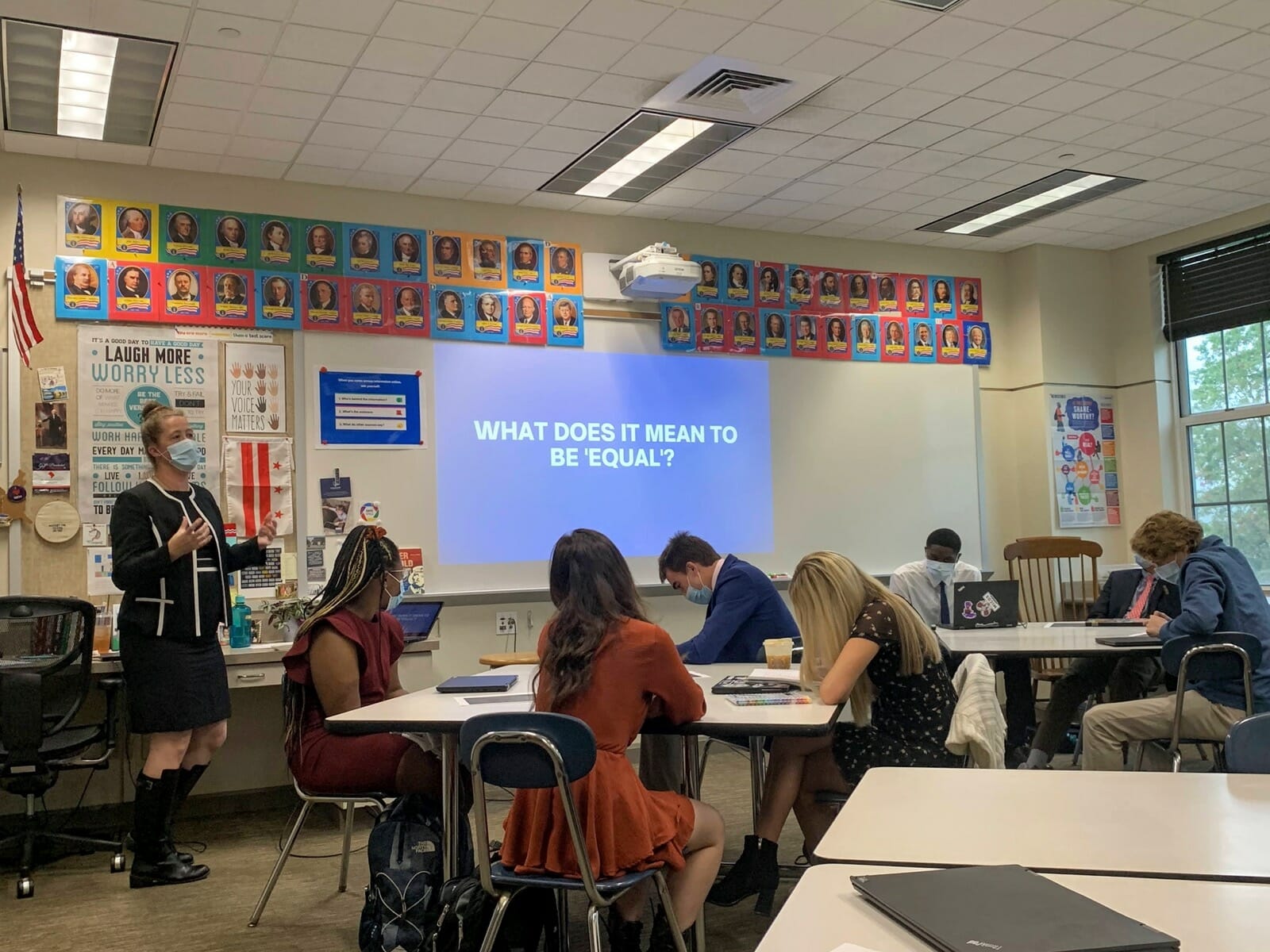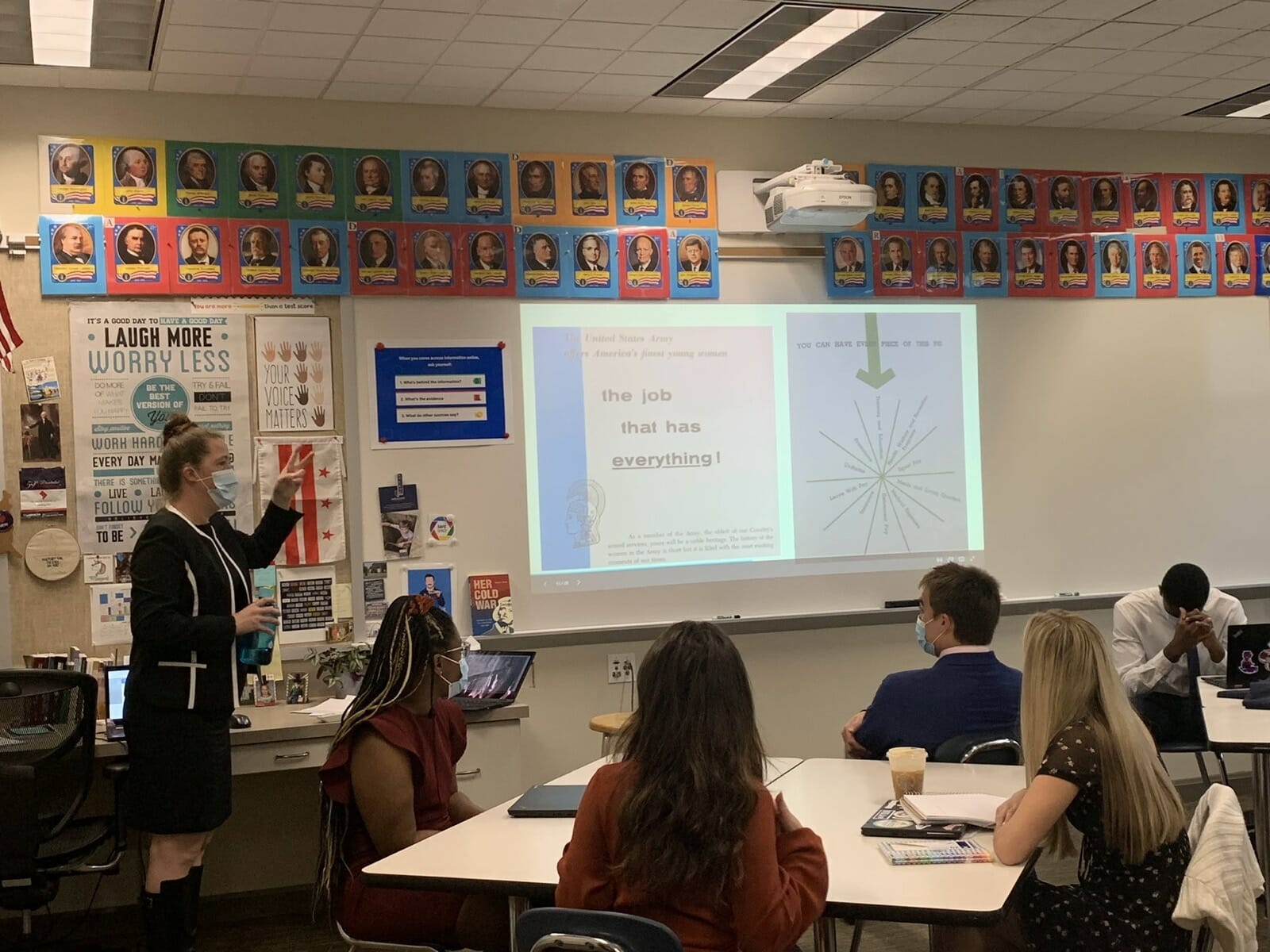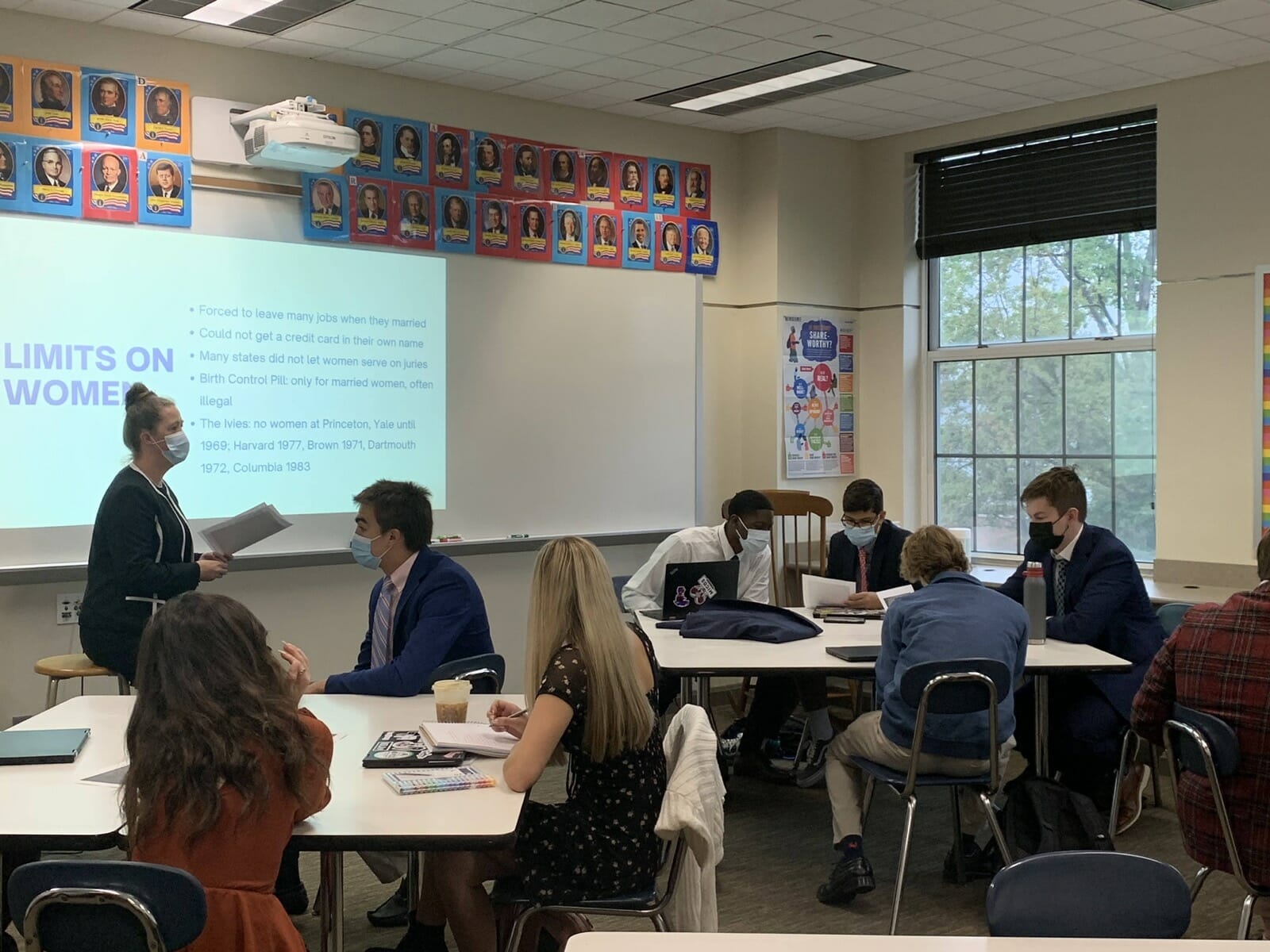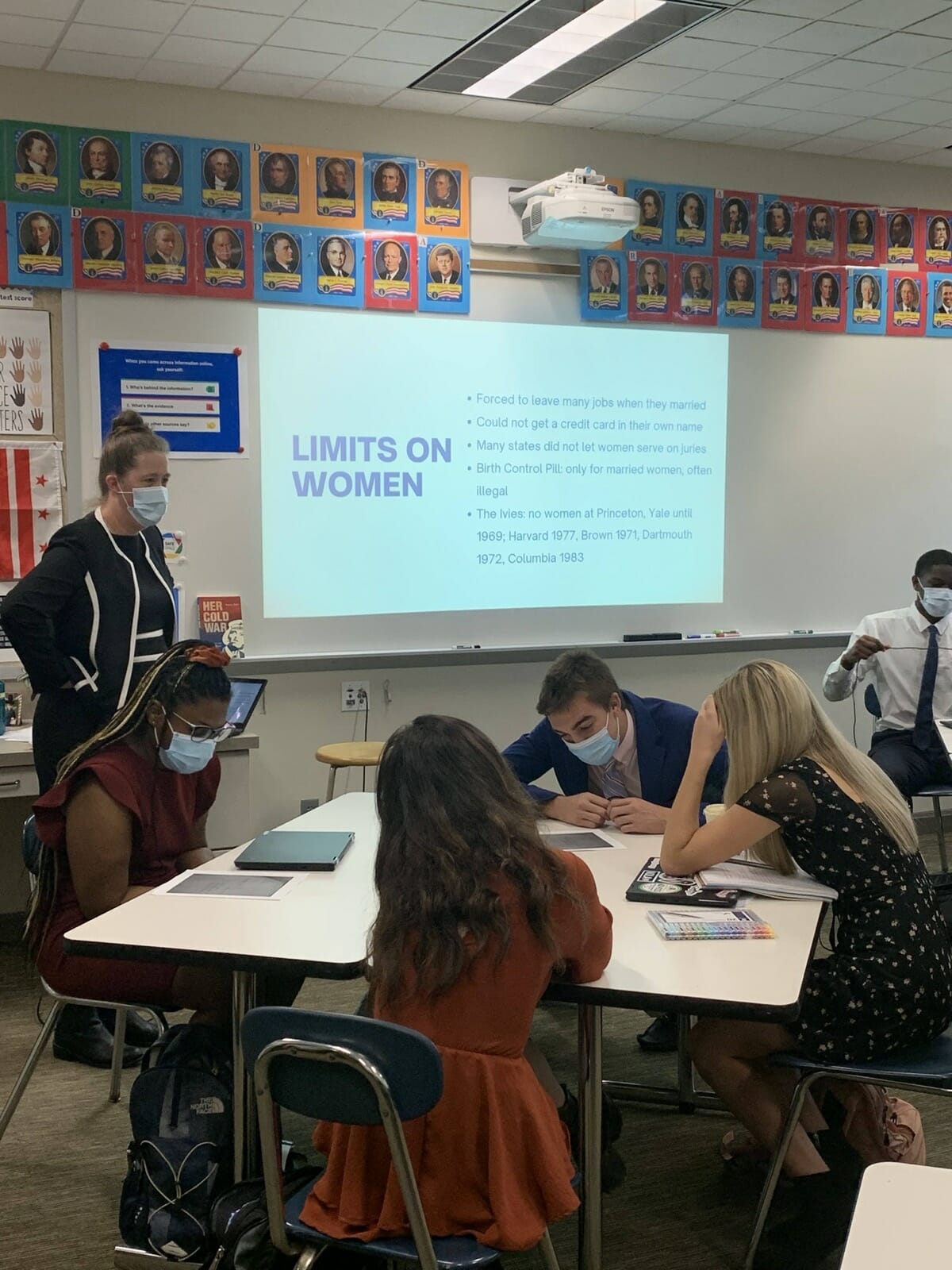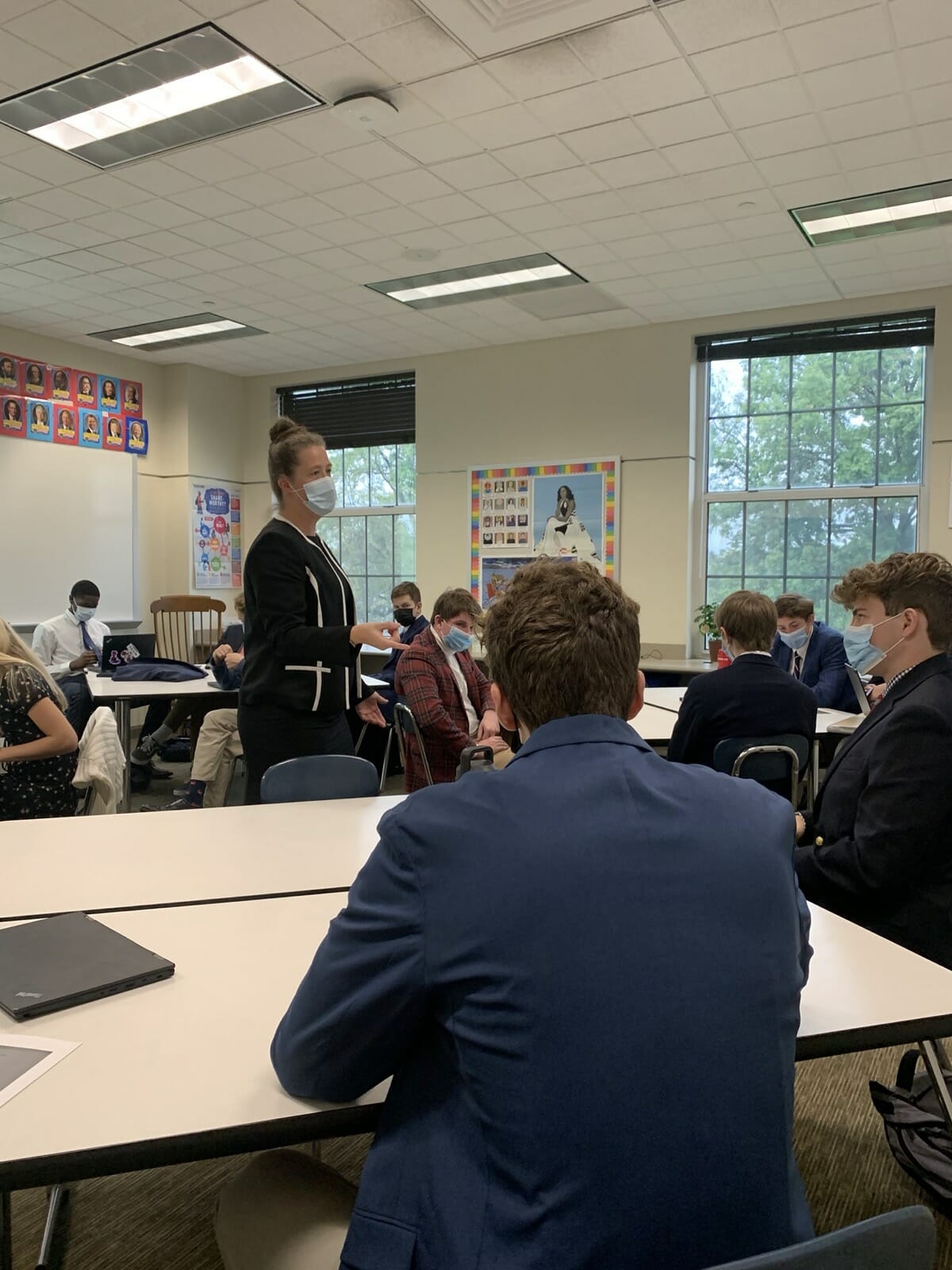Kristin Roberts’ Politics and Protest class covers a wide range of topics. Politics is often about conflict and sometimes that conflict takes place within government systems and other times in the streets. Students focus on the political and social changes that take place not only through political means, such as elections, legislation, and in the courts but also through activism and protest. The class is part traditional political science, focusing on conflicts within government such as how differences of opinions between elected officials shape government at local and national levels. At the same time, students also examine what happens when citizens take conflict into their own hands. How do state responses impact them? Can popular protests make change? They examine both political systems worldwide and case studies of movements and protests within those systems, exploring political conflict from the past and present in order to provide a critical lens in understanding the world’s politics and people today.
This term, Roberts took advantage of an opportunity that lives just down the hall. She invited fellow History and Social Studies Teacher Dr. Tanya Roth to guest lecture in the class, drawing on Roth’s extensive research on the women’s rights movement in the United States.
The students learned about the pace of the movement, subculture movements, the complexity, changing gender philosophies, and more. “The students had just had a bit of homework on the rise of the women’s movement in the 1960s and 1970s, so I came in to talk about the movement a little more and contextualize it,” said Roth. “I talked very briefly about women in the military and moved briefly through the “waves” of feminism. I brought in primary sources from the Gerald Ford presidential library, which were 13-second radio slots promoting the Equal Rights Amendment. Students read from those about why the ERA was needed.”
“I found it very interesting that through women’s rights movements in United States history there have been numerous pauses in the protests for change. Previously, before Dr. Roth’s presentation, I thought that women’s rights movements steadily picked up after initially gaining traction,” said John Niedringhaus ’22.
“I had no idea about feminist subculture punk movements that emerged during the third wave of feminism in the early 1990s such as Riot Grrrl, which embraced a more “angry” and direct response to discrimination and used tactics such as punk political protest music that addressed sexual assault, domestic abuse, sexuality, patriarchy, and more,” said Annabelle Abramov ’22. “Historically, feminist movements were not necessarily welcoming to LGBTQ, punk, and alternative women, and their contributions are often left out of history, so it was so interesting to learn more about this aspect of feminism that was inclusive and embraced differences.”
Jackson Strelo ’22 said, “What I found to be the most interesting out of everything she had shared was how complex the ERA movement was, and not just in terms of pro and anti movements. The idea that even the most charged political entities and variables can share such different views was reflected in her presentation. Although Phyllis Schlafly was the leader of the Anti-ERA movement, Dr. Roth shared that there were different leaders of groups that might have both supported the Equal Rights Amendment, but had different priorities in terms of what was included and what mattered most to them. In that political era as a whole, age was one of the biggest wedges between even the groups with the most solidarity, and that had large effects on the outcomes of these protests and the movement as a whole!”
“We learned about the first two waves of the movement, as well as the third one which is taking place today,” reported Cate Cody ’22. “We talked about the shift from the gender difference philosophy and protectionism used throughout history to the gender sameness philosophy we have adopted today, an issue prompted in part by the inclusion of women in the military. When women and men began to be viewed as sharing more similarities than differences, people could start being hired based on their ability regardless of gender.”
“It was an honor to have Dr. Roth guest teach my Politics and Protest class about second-wave feminism and the Equal Rights Amendment and share her research and passion for this particular topic,” said Roberts. “This course is focused on exploring how change has taken place not only through political actions but also through activism and protest, and Dr. Roth’s invaluable expertise on women’s rights during the 1960s and 1970s, specifically the evolution of the ERA and where the proposed amendment stands today, brought a new perspective and depth to our class’s conversations. My students especially liked reading out loud radio advertisements supporting the ratification of the ERA as it made the activism come alive!”
Strelo agreed. He said, “I thought Dr. Roth’s presentation to be a wonderful culmination of her knowledge, and how she presented it was very energetic and passionate, which I really appreciated.”
At least one student plans to keep learning. Cody said, “It was so great to have the opportunity to hear from Dr. Roth on the women’s movement. She is so knowledgeable and this is a topic I am interested in studying in college, so I really enjoyed getting to learn more on this subject.”
